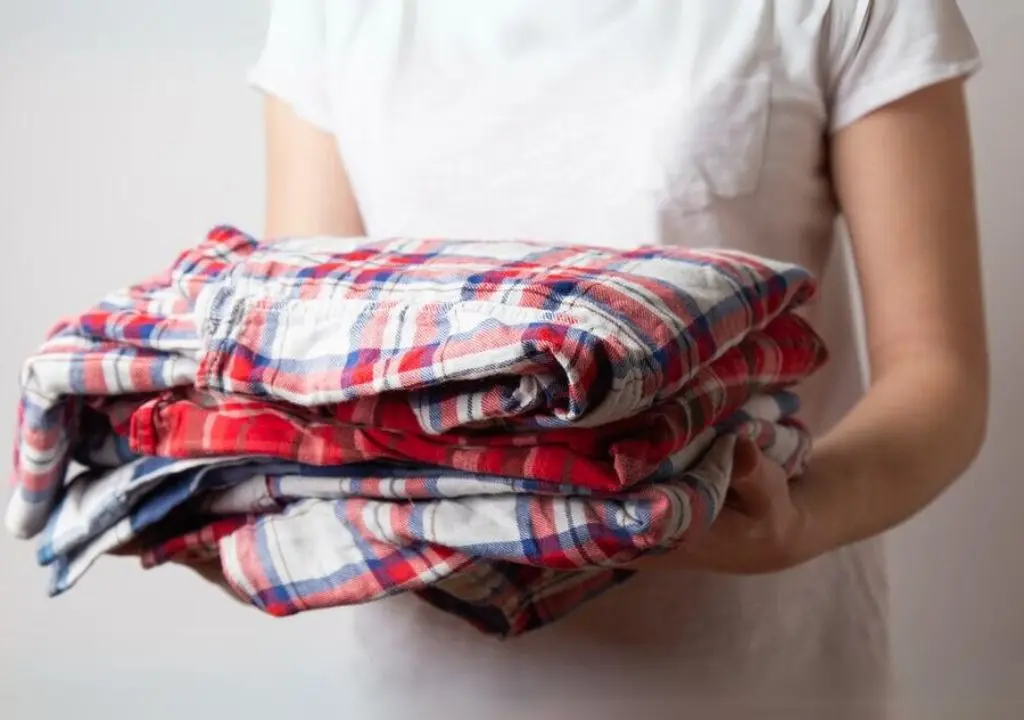Step-by-Step: How to Wash Your Kilt for Longevity and Freshness

Kilts are not just pieces of clothing but symbols of heritage, tradition, and style. Proper care and washing are essential to keeping your kilt looking its best and ensuring it lasts for years. In this comprehensive kilt clothing care guide, we'll walk you through everything you need to know about washing your kilt, from preparation to drying, and even how to handle common issues. Whether you need to hand wash or machine wash your kilt, we've got you covered.
Understanding Your Kilt
Types of Kilts
Kilts come in various types, each with its unique characteristics and uses. Traditional kilts are made from heavy wool and are often worn for formal occasions. On the other hand, utility kilts are made from lighter materials and designed for everyday wear. Knowing the type of kilt you have is the first step in understanding how to care for it. Each type requires specific cleaning and maintenance methods to keep it pristine, whether from any kilt clothing brand.
Materials Used in Kilts
The material of your kilt will determine the best washing method. Most traditional kilts are made from wool, while modern kilts can be made from polyester, cotton, or a blend of fabrics. Wool requires more delicate handling compared to synthetic materials. Understanding the fabric type is crucial because it influences the cleaning process, including the choice of detergent, water temperature, and drying methods.
Preparation Before Washing
Inspecting Your Kilt
Before washing your kilt, inspect it thoroughly for any stains, loose threads, or damage. Addressing these issues beforehand will prevent them from worsening during the washing process. Use a gentle brush to remove any surface dust and dirt. If you find any significant damage, consider repairing it before washing it to avoid further issues.
Reading the Care Label
Always check the care label on your kilt. This label provides valuable information on the best washing practices for your kilt's material. Ignoring these instructions can damage your kilt and reduce its lifespan. The care label will indicate whether the kilt can be hand-washed or machine-washed and provide details on the appropriate ironing temperature and other care tips.
Gathering Necessary Supplies
Having the right supplies on hand will make the washing process smoother. You'll need a gentle, mild detergent, a basin or washing machine, a laundry bag (if machine washing), and a clean, dry area for drying your kilt. Other helpful items include spot cleaners, a steam iron, and a pressing cloth.
Washing Methods
Hand Washing Your Kilt
Hand washing is the safest method for most kilts, especially wool ones. It allows for gentle cleaning without the risk of damaging the fabric. This method is particularly useful for maintaining your clothing for kilts pleats and overall shape.
Machine Washing Your Kilt
You can opt for this method if your kilt is made from synthetic materials or labeled as machine washable. However, it's important to follow specific guidelines to avoid damage. Machine washing can be effective but requires careful attention to settings and detergents used.
Step-by-Step: Hand Washing
Filling the Basin
Fill a basin with lukewarm water. Hot water can cause wool to shrink and colors to fade. Lukewarm water is gentle enough to clean the fabric without causing any damage.
Adding Detergent
Add a small amount of mild detergent designed for delicate fabrics. Avoid using regular laundry detergent, as it can be too harsh. Ensure the detergent is fully dissolved before adding the kilt.
Soaking Time
Submerge your kilt in lukewarm water and let it soak for 15-20 minutes. This soaking period helps to loosen dirt and grime embedded in the fabric.To enhance the cleaning process, gently swish the kilt occasionally, ensuring all areas are adequately exposed to the water and detergent.
Agitation
Gently agitate the kilt with your hands. Focus on particularly dirty areas, but avoid rubbing too hard to prevent damaging the fibers. Gentle agitation helps to remove dirt without harming the fabric.
Rinsing
Once you've washed your kilt, drain the soapy water and refill the basin with clean, lukewarm water. Rinse the kilt thoroughly to remove all detergent residue. Repeat the rinsing process if necessary until the water runs clear.
Step-by-Step: Machine Washing
Choosing the Right Cycle
Set your washing machine to a gentle or delicate cycle with cold water. Avoid using hot water, as it can damage the fabric. The gentle cycle minimizes agitation, reducing the risk of fabric damage.
Using a Laundry Bag
Place your kilt in a laundry bag to protect it from the machine's agitation. This is especially important for kilts with pleats. A laundry bag provides an extra layer of protection, ensuring the kilt maintains its shape.
Adding Detergent
Use a mild detergent suitable for delicate fabrics. Add it to the machine as per the instructions. Ensure you use the recommended amount to avoid over-sudsing, which can be hard to rinse.
Drying the Kilt
Once the washing cycle is complete, remove your kilt from the machine immediately to prevent wrinkles from setting in. Shake it gently to help it return to its natural shape.For best results, hang the kilt on a wide, padded hanger in a well-ventilated area away from direct sunlight to maintain its structure and prevent fading.
Drying Your Kilt
Air Drying vs. Machine Drying
Air drying is preferred for most kilts, as it prevents shrinkage and maintains the fabric's integrity. If you must use a dryer, choose the lowest heat setting and avoid over-drying. High heat can cause damage to the fabric, especially wool.
Proper Hanging Techniques
To maintain its shape, hang your kilt on a wide, wooden, or padded hanger. Avoid using wire hangers, as they can cause the fabric to stretch and distort. Proper hanging ensures the kilt dries evenly and retains its structure.
Ironing and Pressing
Choosing the Right Iron Settings
Set your iron to the wool setting for wool kilts or the appropriate setting for synthetic materials. Always use a pressing cloth to protect the fabric from direct heat. Using the correct settings prevents burning and damaging the fabric.
Step-by-Step Ironing Guide
Start by ironing the wrinkles from the bottom up. Move the iron gently to avoid creating new wrinkles. If your kilt has a lining, iron it separately. Use a steam iron for best results, and ensure you have a cooling period after ironing to let the fabric set.
Pressing Your Kilt
Use a damp and pressing cloth to avoid direct heat contact with the kilt fabric. Proper pleat positioning is crucial to maintain the kilt's traditional look. Press each pleat carefully, ensuring the iron is set to the correct temperature for the fabric to prevent damage.
Storing Your Kilt
Proper Folding Techniques
Fold your kilt along the pleats to avoid creases. Store it in a cool, dry place away from direct sunlight. Proper folding helps preserve wrinkles and prevents unwanted creases.
Using Storage Bags
Consider using acid-free storage bags to protect your kilt from dust and pests. Avoid plastic bags, as they can trap moisture and cause mildew. Acid-free bags are breathable and protect the fabric from deterioration.
Avoiding Moth Damage
Moths can be a problem for wool kilts. To prevent damage, use moth repellents, such as cedar blocks or lavender sachets, in your storage area. Ensure the storage location is cool and dry.
Maintaining Kilt Freshness
Using Fabric Fresheners
Fabric fresheners can keep your kilt smelling fresh between washes. Choose a product designed for delicate fabrics. Fresheners help maintain a pleasant scent without needing frequent washes.
Regular Maintenance Tips
Brush your kilt regularly to remove dust and dirt. Spot-clean any stains immediately to prevent them from setting. Baby wipes can be effective for quick touch-ups for minor stains. Regular maintenance extends the time between full washes and keeps the kilt in good condition.
Troubleshooting Common Issues
Dealing with Stains
Use appropriate stain removers for stubborn stains. Test any stain remover on a small, hidden area first to ensure it doesn't cause discoloration. Blot the stain gently rather than rubbing it, and treat it immediately to prevent it from setting. A mixture of dish soap and hydrogen peroxide can be effective for natural options.
Fixing Shrinkage
If your kilt has shrunk, gently stretch it back to its original size while still damp. Avoid using high heat during washing and drying to prevent future shrinkage. Slow, careful stretching helps restore the original fit.
Odor Removal
If your kilt has absorbed odors, airing it out can help. For stronger odors, sprinkle baking soda on the kilt and let it sit for a few hours before brushing it off. This helps neutralize odors without damaging the fabric.
Traveling with Your Kilt
Rolling vs. Folding
When traveling, roll your kilt rather than folding it to minimize creases. Use a kilt carrier to protect it and avoid packing it with heavy items that could press and crease it. Rolling reduces the chances of hard creases forming.
Avoiding Creases
Pack your kilt carefully to minimize heavy creasing. Rolling the kilt instead of folding it can also help prevent deep creases. If creases do form during travel, use a steam iron upon arrival to press them out gently. A kilt carrier can further help maintain its shape and protect it during transport.
Conclusion
Proper care and washing are essential to maintaining the longevity and freshness of your kilt. By following these step-by-step instructions, you can ensure that your kilt remains in excellent condition for years. Whether you're tackling stubborn stains, maintaining wrinkles, or ensuring your kilt dries properly, each step contributes to preserving the quality and appearance of your kilt. Remember, the key is to handle your kilt carefully, using appropriate methods for its specific material and construction.
In addition to washing, consider regular maintenance practices like brushing, airing out, and storing your kilt properly to extend its lifespan. Implementing these practices helps retain the kilt's aesthetic appeal and keeps it comfortable and ready for any occasion. Whether you choose hand washing or machine washing, and whether you prefer air drying or carefully pressing your kilt, each action you take shows respect for this iconic garment and its cultural significance.
FAQs
Yes, but it depends on the material. Use a gentle cycle with cold water and a laundry bag for synthetic or utility kilts. Traditional wool kilts should be hand-washed or dry-cleaned to avoid damage.
Hand wash with lukewarm water and mild detergent. Soak for 15-20 minutes, gently agitate, rinse thoroughly, and air dry on a wide hanger. Regular brushing and spot cleaning help maintain freshness between washes.
Wash your kilt only when necessary, typically every few months. Frequent washing can wear out the fabric. To maintain cleanliness, use regular brushing, spot cleaning, and airing out between wears.
Check the care label. Generally, hand wash with lukewarm water and mild detergent, or opt for professional dry cleaning. Air dry on a wide hanger to maintain pleats and shape.
Dry cleaning a kilt typically costs between $15 and $40, depending on the fabric and location. To maintain quality and appearance, ensure the dry cleaner is experienced with kilts.


